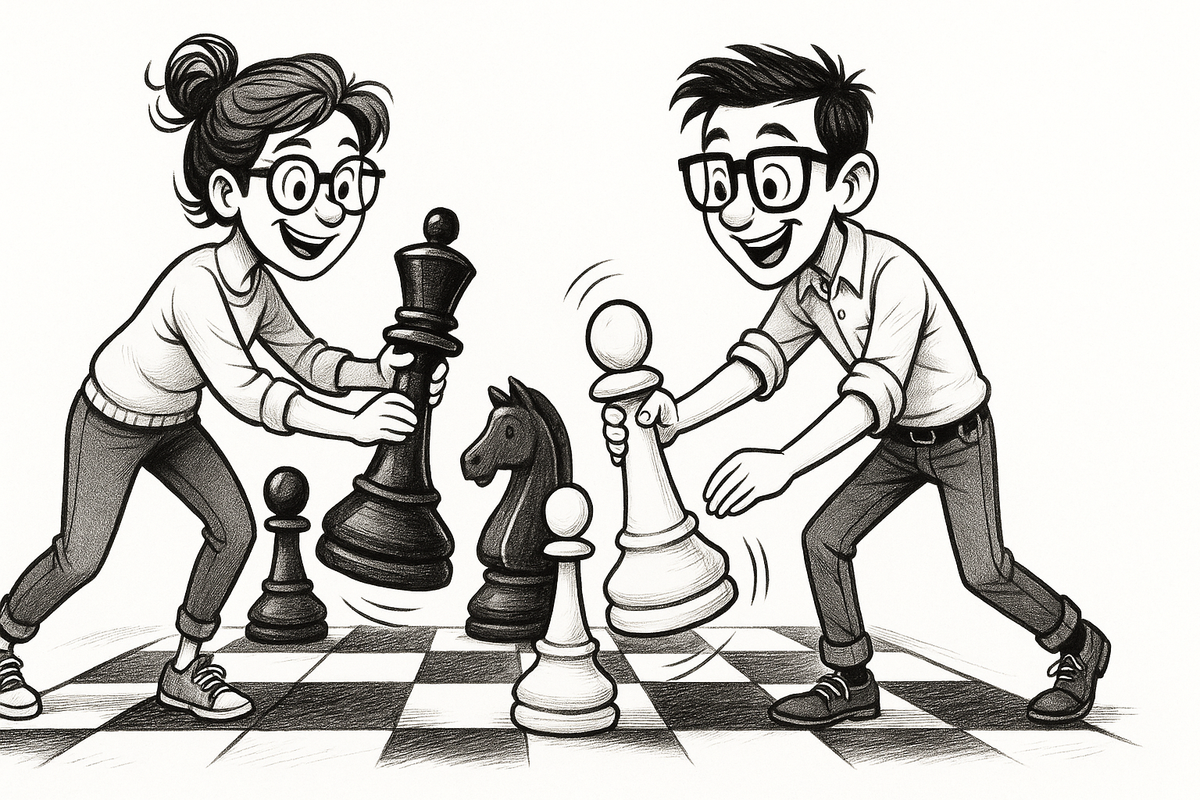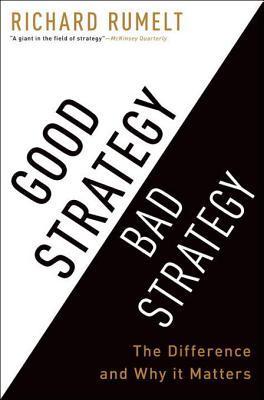Strategy in 5 Choices
Strategy is anything but a planning exercise - it's 5 powerful choices that create coherence and consistency.

During the sabbatical after my Skryv years as a co-founder, I've been reading and studying a lot. One of the topics that really caught my attention was the value of getting crystal clear on your strategy 🎯
Not the 50-page PowerPoint kind of strategy that gathers dust. I'm talking about Roger L. Martin's deceptively simple framework that consists of just five questions. Questions that, when answered honestly and completely, create the kind of clarity that makes everything else fall into place, even though the entire strategy does not take more than a 2-pager.
On my new assignment, I've had the opportunity to apply my learnings. The impact is even larger than what I expected.
The framework that changes the game
Rober L. Martin defines strategy as choice. Not planning. Not analysis. Choice. And specifically, these five cascading choices:
1. What is your winning aspiration? What are you actually trying to achieve? This isn't your mission statement - it's your clear, specific goal that everyone can rally behind.
2. Where will you play? Which specific markets, segments, or customer groups will you focus on? The power is in what you choose NOT to do.
3. How will you win where you've chosen to play? What's your competitive advantage in those specific spaces? How do you compel customers to choose you?
4. What capabilities must be in place to win? What unique abilities (superpowers) do you need to develop that your competitors lack?
5. What management systems are required? How do you ensure those capabilities are built and maintained over time (sustainably)?
An Integrated System of Choices
There is a big challenge (and at the same time beauty) in Roger's approach: the questions cannot be answered in isolation.
You can't properly answer question 2 without question 1. Question 3 depends on your answers to 1 and 2. And so on. At the same time, the management systems (question 5) ensure your capabilities (question 4) stay sharp. Your capabilities enable your competitive advantage (question 3) in your chosen market (question 2), which you all need to achieve your aspiration (question 1).
So it's an integrated system of choices that, when properly executed, ensures coherence and consistency. Taking you beyond the wishful thinking you often see in mission statements or lofty goals that lack execution strategy. And that's the beauty of this framework: when you've answered all five questions, you've essentially built your execution roadmap.
An example
Colruyt is a Belgian retailer that has a very recognisable strategic position, which can be translated to the following 5 answers (for illustration purposes only, I have no relation with Colruyt).
- Winning Aspiration To be the most reliable discount retailer: always the lowest price AND quality.
- Where to Play Supermarkets in Belgium, Luxembourg & France, with focus on price-conscious families.
- How to Win "Lowest price guarantee": scan competitor prices + private labels, so that the customer blindly trusts Colruyt to offer the cheapest shopping cart.
- Capabilities (Superpowers) Hyper-efficient logistics, austere stores, data-driven price comparison, strong private label portfolio.
- Management Systems (Sustain) Strict cost culture ("lights off, folded cardboard"), transparent price comparison systems, KPIs around cost per product & customer satisfaction.
What I learned from implementing this
When I introduced this framework to my current team, something remarkable happened. Not overnight, but over the weeks & months that followed:
We found clarity and focus. No more wandering discussions about "what we should work on next" or juggling with 50 balls in the air. The five questions gave us a filter for consistent and coherent decision taking and a common vocabulary to have an open and clear debate.
Team members became more autonomous. With clear answers to these questions, people could make more decisions independently. They knew what aligned with our strategy and what didn't, allowing them to take more ownership and leverage their experience.
Energy and motivation increased. Clear, well-aligned targets are energising. Because the strategy gives a clear answer to our definition of succes, it brought the clarity and focus to set these energising targets the entire team can work towards.
We learned to say no with confidence. This might be the most valuable outcome. Having clear reasoning for why something doesn't fit makes "no" feel empowering rather than limiting.
The overall result is that we spend less time debating and more time executing well aligned activities. If you ask me, the best way to get to results faster and avoid waste 🎉
Your turn
I'm curious - how clear is your team's strategy using these five questions? Could everyone on your team answer them consistently?
What's your experience with strategic clarity? I'd love to hear how it's impacted your team's performance. Do not hesitate to get in touch if you want to ping-pong around this topic!
Let's learn and grow together! 💪
👀 For the attentive readers that made it to the bottom. You are right: it's been a while since my last newsletter came out. That has 2 big reasons:
- I started a new role a few months ago, which is really interesting. It is also taking quite a lot of time and mental space 🕐 🧠 No surprise there, we only have 24 hours a day 😄
- I repositioned the newsletter to focus more on digital sustainability, yet I found out that the learning angle gives me more energy than focusing on 1 specific topic... I felt obliged to write about greener software, but kind of hit a writers block. It took me a while to invert my decision, but now I am happy I did 😅
In the meantime, I hope you enjoyed this newsletter edition, do no hesitate to share with interested colleagues!
References & further reading






